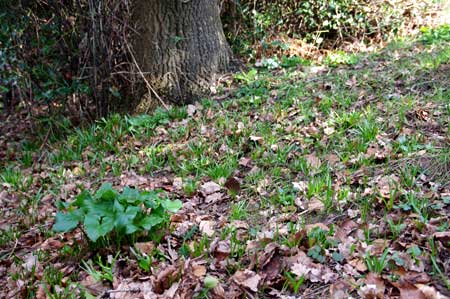| Rank in East Sussex | Species | Average per East Sussex garden | In my garden |
|---|---|---|---|
| 1 | House Sparrow | 3.4 | None |
| 2 | Blue tit | 3.3 | 2 |
| 3 | Starling | 2.6 | 2 |
| 4 | Blackbird | 2.6 | 3 |
| 5 | Woodpigeon | 2 | 1 |
| 6 | Great tit | 1.4 | None |
| 7 | Chaffinch | 1.4 | None |
| 8 | Robin | 1.3 | 1 |
| 9 | Collared Dove | 1.2 | 1 |
| 10 | Magpie | 1.1 | 2 |
We also got 1 goldfinch (19th in East Sussex), 1 pied wagtail (30th), 1 song thrush (22nd). Our scores for the top 10 birds are a little less than average, which is surprising since we have a big garden with plenty of trees. That said, the trees and bushes allow the birds to stay out of sight and I didn't include any that I couldn't positively identify from a tantalising glimpse of a shape or a tail.
We do have one gaping gap right at the top of the table - no house sparrows. On previous years we've had a few but this year - none. For me, this is a particularly sad omission. I grew up in the London area and the cheeky sparrow was very much a bird of my childhood. Every time we threw crumbs out in the garden - no posh RSPB food then - dozens of squabbling sparrows would descend to enjoy our scraps. I didn't really notice them going. I had moved around, gone to university in Sheffield and then moved to Sussex. Now seeing or hearing this lively little bird has become a special treat rather than a part of every day life.
If it was only our garden that is missing sparrows, it wouldn't matter, but - although house sparrows are the most common bird in our counts - the RSPB say "Numbers of house sparrows, also on the red-list, dropped by 17 per cent in gardens compared to 2012 ..."
On their Red, amber and green explained page the RSPB tell us that "Red is the highest conservation priority, with species needing urgent action."
Kate Vincent completed a PhD Investigating the causes of the decline of the house sparrow in Britain and the associated web site has some information on What you can do. Her suggestions include:
- provide seed all the year round - especially sunflower hearts
- provide mealworms in summer, to help the fledglings
- provide a good mixture of shrubs in the garden
- leave some grass long
- provide a well topped-up bird bath all the year round.






